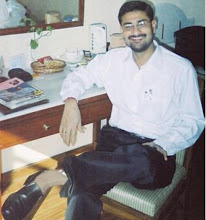“A modernising nation's economic prosperity requires at least a modest budget,” asserted CJI. Judiciary, is the fourth pillar of the democracy but in terms of our GNP, the expenditure on judiciary in India is hardly 0.2 per cent.
JUDICIARY IS called the fourth pillar of the democracy in the country and though there has been advancement to a level in its justice delivery system, a lot more could be done for furthering the process.
As per figures revealed during the annual conference of chief ministers and chief justices of states held at the capital, barring New Delhi, many states of the country have been spending less than one per cent of their budget for subordinate judiciary and trial courts. Even Delhi spends a meagre 1.03 per cent of its budget on subordinate judiciary.
In terms of gross national product (GNP), the expenditure on judiciary in India is hardly 0.2 per cent, whereas it is 1.2 per cent in Singapore, 1.4 per cent in America and 4.3 per cent in Britain.
While the total expenditure by the central government says that in the ninth plan (1997-2000), the centre released Rs 3.85 billion for priority demands of judiciary, which amounted to a meagre 0.071 per cent of the total expenditure of Rs 5.41 trillion (Rs 541,207 crores).
Similarly, during the 10th Plan (2002-2007), the allocation was seven billion rupees, which is 0.078 per cent of the total plan outlay of Rs 8.93 trillion i.e., Rs 8,93,183 crores and these figures show that such meagre allocations are grossly inadequate to meet the requirements of the judiciary.
In the two-day judges meet, the judiciary had raised a demand for raising its budgetary allocation. In his address to the conference, even Chief Justice of India (CJI), KG Balakrishnan made a strong case for enhanced funding for the judiciary saying the courts have been playing an important role in the country’s economic growth and development.
He also raised the monetary argument before Prime Minister, Dr Manmohan Singh for greater funding and budgetary allocation to the judiciary.
“The courts in this country plays an important role in the economic growth and development. There is empirical evidence to show that the rule of law does contribute to a nation’s wealth and its rate of economic growth,” the CJI observed.
Underlying the problem of inadequate judicial infrastructure, leading to the huge backlog of cases and raising dissatisfaction in the public mind about the effectiveness of the court process, Balakrishnan asserted that a modernising nation’s economic prosperity requires at least a modest legal infrastructure.
H A Eklavya, 21 April 2008, Monday
http://india.merinews.com
About Me

- Kamal Kumar Pandey (Adv. Supreme Court of India)
- Lawyer Practising at Supreme Court of India. Court Experience: Criminal, Civil & PIL (related to Property, Tax, Custom & Duties, MVAC, insurance, I.P.R., Copyrights & Trademarks, Partnerships, Labour Disputes, etc.) Socio-Legal: Child Rights, Mid Day Meal Programme, Sarva Shiksha Abhiyaan, Women Rights, Against Female Foeticide, P.R.Is, Bonded Labour, Child labour, Child marriage, Domestic violence, Legal Literacy, HIV/AIDS, etc. Worked for Legal Aid/Advise/Awareness/Training/Empowerment/Interventions/Training & Sensitisation.
Contact Me
+91 9971049936, +91 9312079439
Email: adv.kamal.kr.pandey@gmail.com
Email: adv.kamal.kr.pandey@gmail.com

No comments:
Post a Comment
Comment